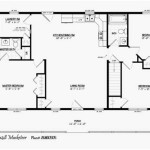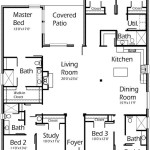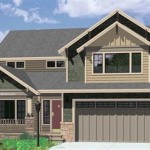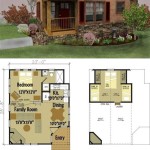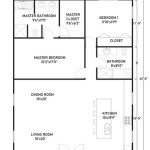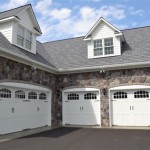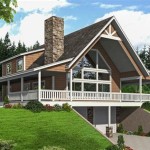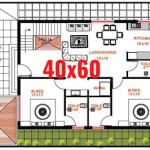Planning Your Two-Car Garage: A Comprehensive Guide
The decision to build a two-car garage represents a significant investment in property and lifestyle. Beyond simply providing sheltered parking for vehicles, a well-planned garage can serve as storage space, a workshop, or even a recreational area. Therefore, careful consideration of various factors is crucial before commencing construction. This article outlines key planning considerations for a two-car garage, covering design aspects, size requirements, material choices, and essential features.
Determining Size and Layout
The dimensions of a two-car garage significantly impact its utility and functionality. While a standard two-car garage typically measures around 20 feet wide and 20 feet deep, these dimensions may prove insufficient for larger vehicles, storage needs, or comfortable maneuvering. The first step involves accurately measuring the vehicles intended for the garage, accounting for the width of the doors when open. Consider the possibility of future vehicle upgrades or additions to the family fleet.
Beyond vehicle dimensions, the intended use of the garage influences the necessary space. If storage is a priority, allocate additional square footage for shelving, cabinets, or overhead storage systems. A workshop area necessitates sufficient space for workbenches, tools, and movement around projects. If the garage will double as a recreational space, consider incorporating features like a television, seating, or even a small game area.
The layout of the garage concerns the placement of doors, windows, and access to the main house. The primary garage door should be wide enough to accommodate both vehicles comfortably. Individual doors, while more expensive, offer greater flexibility and convenience. The placement of a pedestrian door leading to the house is also an important consideration, ideally located for easy access and weather protection. Windows provide natural light and ventilation, but their placement should not compromise security or storage space. The orientation of the garage on the property can influence heating and cooling costs, as well as the amount of natural light received.
Local building codes often dictate minimum size requirements for garages, including ceiling height. It is essential to consult with the local municipality to ensure compliance with all applicable regulations. Failure to adhere to these codes can result in delays, fines, or even the need to rebuild non-compliant structures.
Choosing Materials and Construction Methods
The choice of materials for a two-car garage impacts its durability, cost, and aesthetic appeal. Common construction materials include wood framing, concrete blocks, and metal. Wood framing is a popular choice due to its relative affordability, ease of construction, and versatility. However, wood is susceptible to rot, insect infestation, and fire damage, requiring regular maintenance and treatment. Concrete blocks offer greater durability and fire resistance but are more expensive and require specialized skills for construction. Metal garages are known for their strength and resistance to the elements but may lack the aesthetic appeal of wood or concrete.
The foundation of the garage is crucial for its structural integrity. A concrete slab is the most common type of foundation, providing a stable and level surface for parking and storage. The thickness of the slab should be determined based on the expected load, accounting for the weight of vehicles, equipment, and stored items. Proper drainage is essential to prevent water damage and ensure the longevity of the foundation. The surrounding landscaping should be graded to direct water away from the garage.
The roofing material should be chosen based on the climate, budget, and aesthetic preferences. Asphalt shingles are a popular and affordable option, offering good protection against the elements. Metal roofing is more durable and long-lasting but also more expensive. Tile roofing provides a distinctive look but is heavier and requires a stronger roof structure. The pitch of the roof should be sufficient to effectively shed water and snow. Gutters and downspouts are necessary to channel water away from the foundation and prevent erosion.
Insulation plays a significant role in regulating the temperature inside the garage, reducing energy costs, and preventing condensation. Fiberglass insulation is a common and affordable option, but it can be less effective in colder climates. Spray foam insulation provides a superior thermal barrier and can also help to seal air leaks. Rigid foam insulation is another option, offering good insulation value and resistance to moisture. The walls, ceiling, and garage door should all be properly insulated for optimal energy efficiency.
Addressing Electrical and Plumbing Needs
The electrical and plumbing requirements of a two-car garage depend on its intended use. Basic electrical needs include adequate lighting, outlets for power tools and appliances, and wiring for the garage door opener. If the garage will be used as a workshop, consider installing dedicated circuits for high-power tools to prevent overloading. Adequate lighting is essential for safety and visibility, especially when working on projects. Consider installing both overhead lighting and task lighting for specific work areas.
If plumbing is desired, options include a utility sink for washing hands or tools, a hose bib for outdoor watering, and even a toilet and shower if the garage is intended for use as a recreational space or guest area. Proper drainage is essential for any plumbing fixtures. The plumbing system should be designed to prevent freezing in cold climates. A backflow preventer should be installed to prevent contamination of the water supply.
Wiring and plumbing should be installed by qualified professionals to ensure compliance with local codes and safety regulations. Improper wiring can create a fire hazard, while improper plumbing can lead to water damage or contamination. Permits are typically required for electrical and plumbing work, and inspections are necessary to ensure compliance. The location of electrical panels and plumbing shut-off valves should be easily accessible in case of emergency.
Consider installing a dedicated circuit for an electric vehicle (EV) charger if future EV ownership is anticipated. The amperage of the circuit should be sufficient to accommodate the charging requirements of the EV. The location of the charger should be convenient and accessible to the vehicle. A surge protector can help to protect sensitive electronic equipment from power surges.
Choosing Garage Door and Operating System
The garage door is a prominent feature of the garage and plays a significant role in its security, insulation, and aesthetic appeal. Common garage door materials include steel, wood, aluminum, and fiberglass. Steel doors are durable, affordable, and low-maintenance. Wood doors offer a classic look but require more maintenance and are more expensive. Aluminum doors are lightweight and rust-resistant but can be dented more easily. Fiberglass doors are durable and resistant to the elements but can be more expensive than steel doors.
The garage door should be insulated to improve energy efficiency and reduce noise transmission. Insulated doors can also help to maintain a more consistent temperature inside the garage. The thickness of the insulation should be chosen based on the climate and desired level of insulation.
The garage door opener should be reliable, secure, and easy to use. Common types of openers include chain drive, belt drive, and screw drive. Chain drive openers are the most affordable but can be noisy. Belt drive openers are quieter but more expensive. Screw drive openers are durable and low-maintenance but can be slower than other types. The opener should have safety features such as automatic reversal and obstruction detection to prevent accidents.
Consider incorporating smart home technology into the garage door system. Smart garage door openers can be controlled remotely via smartphone or tablet, allowing for convenient access and monitoring. They can also be integrated with other smart home devices such as security cameras and lighting systems. A battery backup is recommended in case of power outages.
Planning for Security and Safety
Security is a paramount concern when planning a two-car garage. A strong and secure garage door is the first line of defense against theft. Consider installing a deadbolt lock on the pedestrian door for added security. Windows should be equipped with locks or security film to prevent break-ins.
Lighting is an effective deterrent to crime. Install motion-activated security lights around the perimeter of the garage to illuminate the area at night. Consider installing a security camera system to monitor the garage and surrounding property. The cameras should be positioned to capture clear images of the garage door, pedestrian door, and any other potential points of entry.
Safety is equally important. Install a carbon monoxide detector inside the garage to warn of dangerous levels of carbon monoxide. Store flammable materials in approved containers and away from ignition sources. Keep the garage clean and free of clutter to prevent accidents. Install a fire extinguisher in an easily accessible location.
Regularly inspect the garage door and opener for any signs of damage or wear. Lubricate the moving parts of the door and opener to ensure smooth operation. Test the safety features of the opener regularly to ensure they are functioning properly. Educate all family members on garage safety procedures.

Plan 30030 Garage Apartment Two Car Detached With

2 Car Garage With In Back 864 24 X 36

900 J1 30 X Behm Design

2 Car Garage Plans D No 576 14 24 X By Behm Design

2 Car Garage Adu Architectural Plans With Loft Digital

Two Car Garage Plans 24 X22 Standard Detached Blueprint Digital

2 Car Garage Plans Floor Apartment Lofts

Diy 2 Car Garage Plans 24x26 24x24

Basic 2 Car Garage Plan 520 1 20 X 26 By Behm Design

2 Car Garage Plans The Plan

